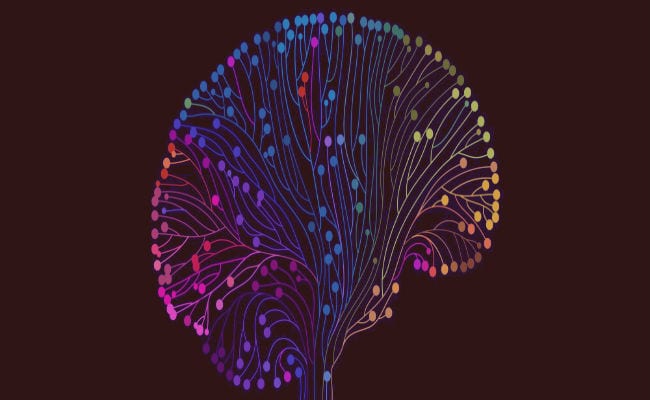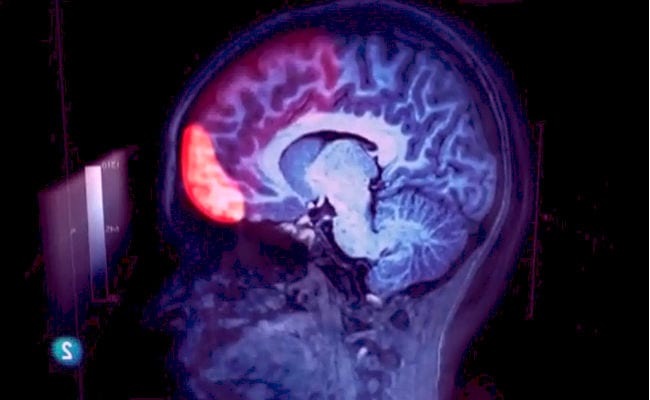The brain is the central organ of our nervous system, being the "computer" that regulates and controls all our sensory and motor functions, it is also responsible for thinking, memory and intelligence; formed by a complex structure, it is divided into two hemispheres, right and left, separated by a cleft, known as the interhemispheric or interhemispheric fissure; This area of the brain is made up of neuronal tissue, and is also known as the neocortex or cortex and it is in it where thought resides. In each hemisphere, there are four zones that regulate specific functions in our body.
Now, once these basic points are clarified, we can define what do we mean when we talk about the frontal lobe, In a simple and direct way, we can say that it is basically one of the four areas in which the cortex is divided, it is responsible for regulating the execution functions, which range from language, planning and attention processes. The frontal lobe is also linked to the motivational and behavioral components that determine the personality of the individual, directly influencing development in social environments and the behavior itself of the person.
Characteristics of the frontal lobes

The cerebral cortex is 4 mm thick and is made up of five types of neurons that make up six layers, numbered from superficial to inner or deep. The frontal lobe covers a third of the cerebral hemispheres (it is the area of greatest extension), since they go from the frontal pole to the central or Rolando sulcus. The base of the frontal lobes constitutes the so-called orbito-frontal cortex. The great development of the cell layers, I, IV and V in the parts anterior to the motor band, indicates the eminently integrative nature of the frontal lobes.
Structurally, we can say that it is divided by two fissures, Rolando's and Silvio's, giving rise to 4 convolutions:
- The superior frontal gyrus.
- The middle frontal gyrus.
- The inferior frontal gyrus.
- The ascending or Pre-landic frontal gyrus.
These convolutions determine the areas into which the frontal lobe has been divided.
Frontal lobe areas
Main Motor
corresponds to the part of the superior frontal gyrus, This area has as its main characteristic the presence of giant pyramidal cells (from Betz). The electrical stimulation of this area corresponds to movements of muscle groups on the opposite side of the body in response. In this area, the volume of the muscles is not proportional to the extension of the area, but to the importance of the function it has. In this area, the motor skills that determine facial expression and hand movements are determined.
Premotor
This is the area of the ascending frontal gyrus lacking Betz cells, electrical stimuli over this area produce smaller movements than those produced by stimulation of the main motor area. If small surfaces are extracted from this area, the fine coordination of the movements is altered, demonstrating its role in the programming of the movements, from which it derives its name of premotor. It integrates the connections of the thalamus, cerebellum, and the basal ganglia, allowing it to coordinate complex movements, especially of the axial and proximal muscles. In this area there are centers that intervene in the fixation of the movements of the eyes, pharyngeal movements and the articulation of language, of the rotation of the trunk and the head.
Supplementary Motor
The activity of the cells in this area is activated, not only when bimanual coordination is required in tasks, but also in all those movements in which thought intervenes. Plan preaction programs aimed at the main motor area. The action of this area on movement is exerted bilaterally, more for manual activity than for the proximal posture muscles. Rolando (1980) has shown the participation of this area in the perception of extrapersonal space, together with the connections with the sensitive area.
Eye-motor coordination
This area corresponds to the middle vertical strip in this brain region. It intervenes in the orientation of the eyes, based on the input it receives from the temporal (auditory), occipital (visual) and somatic-kinesthetic cortex.
Attention and concentration
They occupy its anterior part, receiving input from the thalamus (median dorsum nucleus) and with the limbic system. Lesions in these areas are manifested in changes of temperament or mood, appreciating a state of indifference, loss of interest in simple actions such as washing, getting up or eating, abstract thinking deficits, loss of attention and memory. The area located in the lower part of the ascending frontal gyrus and inferior frontal gyrus (angular and opercular gyrus) control the muscles associated with language such as the face, tongue, palate and vocal cords. A lesion in this area produces an expressive aphasia, that is, a failure in the formulation of language with difficulty for the emission and articulation of language.
Cognitive functions associated with the frontal lobe

Language
Activation problems in language are associated with damage to the middle lobular area. Transcortical motor aphasia with significant deficits in spontaneous language can occur after damage to the superior and left anterior dorsolateral cortex. The activation deficit can be evaluated through verbal fluency tasks, that is, asking the person to generate the greatest number of words starting with a certain letter. Formulation deficits, or speech disorders, are generative and narrative in nature. They reflect organizational and planning problems. Left injuries produce simplifications, repetitions (perseverations) and omissions. Right injuries can produce amplifications of details, intrusions of irrelevant elements, dysprosodia, all of them leading to a lack of coherence in the narrative.
Memory Control
To consider the role of the frontal lobe in memory, it is useful to distinguish between the basic associative processes of memory and the strategic processes involved in coordinating, elaborating, and interpreting these associations. The role of the frontal lobe in memory is that of control and direction. Damage to the frontal lobes does not always result in the clinically diagnosed “amnesia”. Injury studies have shown the importance of the frontal lobes in recovery tasks where the monitoring, verification and placement of the material in temporal and spatial contexts are of great importance. Reduplication, confabulation, and focal retrograde amnesia, all episodic false recovery disorders, are associated with frontal lobe injuries. Working Memory: The central role of the frontal lobes in working memory is that of direct control and manipulation of information.While the frontal lobes are certainly involved in the storage and maintenance of information, these operations are mostly mediated by zones. more posterior, such as the lower parietal lobe. The role of the frontal lobes is greater as the information received presents greater interferences or exceeds the capacity of the working memory. The dorsolateral cortex is involved in the monitoring and manipulation of information. The role of the orbitofrontal cortex is less clear, some relate it to maintenance, interference control and inhibition.
Attention XNUMX-hour
The frontal lobes are responsible for controlling attention. A correct evaluation of the attention deficit requires the differentiation between the different attentional processes that can be selectively dysfunctional. The traditional evaluation comprises measures of attentional flexibility, selective and sustained attention, while more modern evaluations divide the previous attention systems.
decision making
Recently, according to studies carried out, the importance of the frontal lobes in decision-making tasks that involve reward processes in unstructured situations has been shown. Cognitive profile studies, including various decision-making tests, were performed in patients with unilateral lesions (limited to the orbitofrontal, dorsolateral and dorsomedial regions), in patients with extensive lesions (involving two or more of these two areas) and in normal controls. The authors found that patients with unilateral lesions in the right orbitofrontal cortex had deficits in decision-making tests, but the left lesions did not. These studies have made it possible to establish the existence of an interaction between the prefrontal and orbitofrontal cortex for the decision-making process and that several cognitive processes (especially working memory) are essential for a correct choice of possible alternatives.
Self-regulation
The role of the ventromedial cortex in the processes of inhibition, emotion and rewards, suggests an active participation in the processes of behavioral self-regulation. Patients with damage to the ventromedial cortex may present difficulties in regulating behavior in accordance with their internal goals. These deficits appear from the inability to maintain a mental representation of oneself and to use that self-referential information to inhibit inappropriate responses.
Humour
Humor is a skill that requires the integration of cognition and emotion. Patients with lesions in the right frontal lobe, especially in the more polar medial area, have great difficulties in appreciating jokes and comics.
The frontal lobe in the development of executive functions
This is a highly complex neuroanatomical substrate, and this becomes evident when evaluating the set of reciprocal connections with various systems such as the limbic, which determines the motivational development of the person; Associations with the system have also been evidenced reticular activator, which regulates functions of sustained attention and with the areas of later association, which constitute the organizational system of the recognitions. Based on this, it can be established that the frontal lobe is the structure that controls behavioral responses (Executive functions).
Executive functions are known as a series of cognitive skills associated with anticipating and setting goals, creating plans and programs, initiating activities, and mental operations. Also grouped within this term are self-regulation actions and the monitoring of tasks, the precise selection of behaviors and conducts, and their organization in time and space.
The development of executive function occurs in the period from six to eight years, a period in which children acquire the ability to self-regulate their behavior, by setting goals and anticipating events, which do not depend on external instructions. This cognitive capacity is clearly linked to the development of the regulatory function of language (inner language) and the appearance of the level of formal logical operations and the maturation of the prefrontal areas of the brain, which occurs late in the process of child development. When there is a lesion in the frontal area of the brain, a number of general symptoms can be observed.
Associated disorders
- Attention deficit is defined as a developmental disorder neurological and psychic, frequently diagnosed in childhood, although in many cases it persists into adulthood. It is characterized by an inability to fixate attention or distraction that ranges from moderate to severe. The individual is able to pay attention for short periods. In some cases, this frontal lobe condition has been associated with hyperactivity (motor restlessness) and impulsive behavior, producing problems in multiple areas of functioning, hindering the social, emotional and cognitive development of the person suffering from it.
- Asperger's syndrome is a severe developmental disorder that affects neuro-biological functions, inducing deviations or abnormalities in the following aspects: connections and social skills, use of language for communication purposes, and behavioral characteristics related to repetitive or persevering traits.
- Autistic disorder, induces an alteration of social development, since it is characterized because the individual concentrates on his inner world.
- Obsessive compulsive disorder Anxiety condition that generates intrusive and recurring thoughts, producing restlessness, apprehension, fear or worry, and repetitive behaviors, called compulsions aimed at reducing associated anxiety.